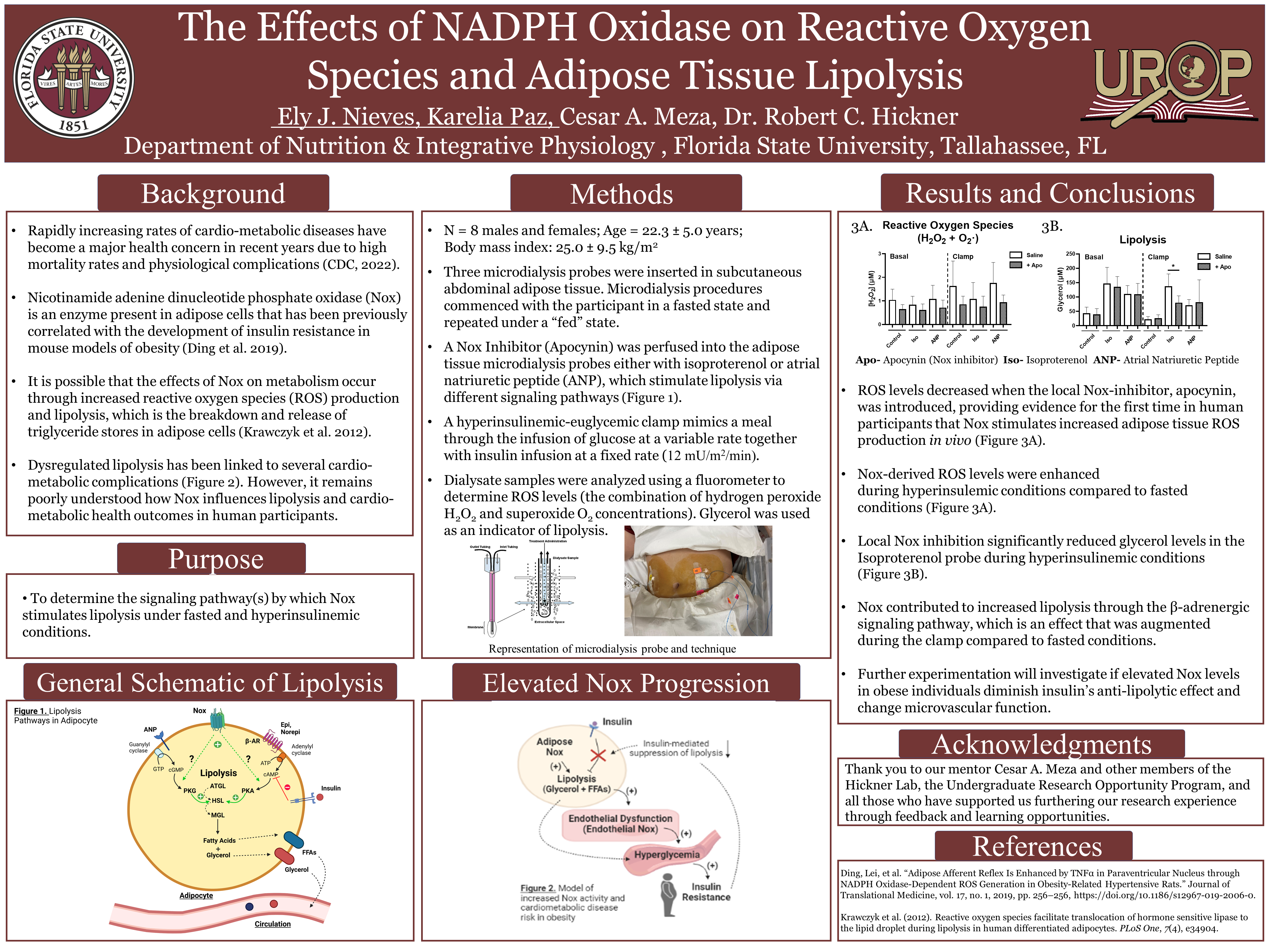Research Symposium
23rd annual Undergraduate Research Symposium, April 6, 2023
Ely Nieves Poster Session 1: 11:00 am - 12:00 pm/ Poster #312

BIO
Ely Nieves is a dedicated and driven undergraduate student from Kissimmee, Florida, with a passion for healthcare and helping others. Currently studying exercise physiology at Florida State University, Ely is committed to gaining the knowledge and skills necessary to achieve his future goal of becoming a Physician Assistant.
The Effects of NADPH Oxidase on Reactive Oxygen Species and Adipose Tissue Lipolysis
Authors: Ely Nieves, Cesar MezaStudent Major: Exercise Physiology
Mentor: Cesar Meza
Mentor's Department: Nutrition and Integrative Physiology Mentor's College: The University of Texas at El Paso Co-Presenters: Karelia Paz
Abstract
Background: Rapidly increasing rates of cardio-metabolic diseases have become a major health concern in recent years due to high mortality rates and physiological complications. Nicotinamide adenine dinucleotide phosphate oxidase (Nox) is an enzyme present in adipose cells that has been previously correlated with the development of insulin resistance in mouse models of obesity. It is possible that the effects of Nox on changes in metabolism occur through increased reactive oxygen species (ROS) production and lipolysis, which is the breakdown and release of triglyceride stores in adipose cells. Dysregulated lipolysis has been linked to several cardio-metabolic complications. However, it remains poorly understood how Nox influences lipolysis and cardio-metabolic health outcomes in human participants. The overall goal of our study is to research the correlations between Nox and lipolysis in the human body, analyzing the pathways in lipolysis that are stimulated by Nox.
Methods: Microdialysis and hyperinsulinemic-euglycemic clamp procedures were conducted in young, healthy males and females to collect in vivo data on local ROS production, microvascular blood flow, and lipolytic rates in subcutaneous abdominal adipose tissue.
Results: Preliminary results have demonstrated that ROS levels were significantly lower when the local Nox-inhibitor apocynin was introduced, suggesting that Nox stimulates increased ROS production in humans. Moreover, Nox seems to contribute to the increase of lipolysis through its β-adrenergic signaling pathway. Further experimentation will investigate if raised Nox levels in obese individuals diminish insulin’s anti-lipolytic effect and change microvascular function.
Keywords: Cardiometabolic diseases, Exercise Physiology, Physiology


